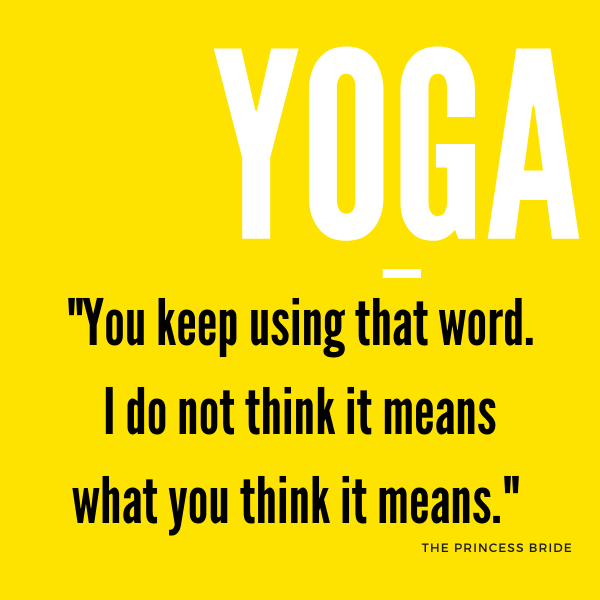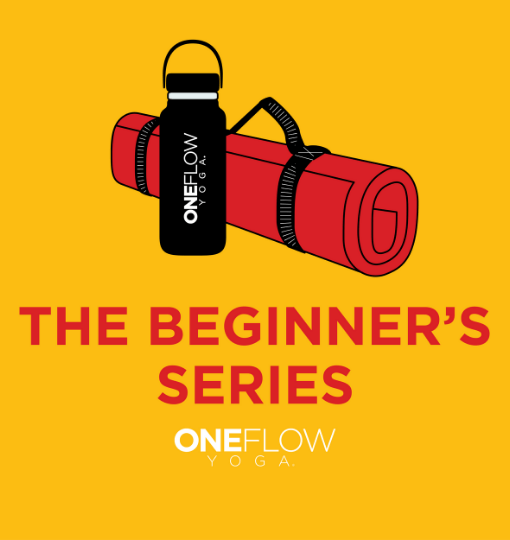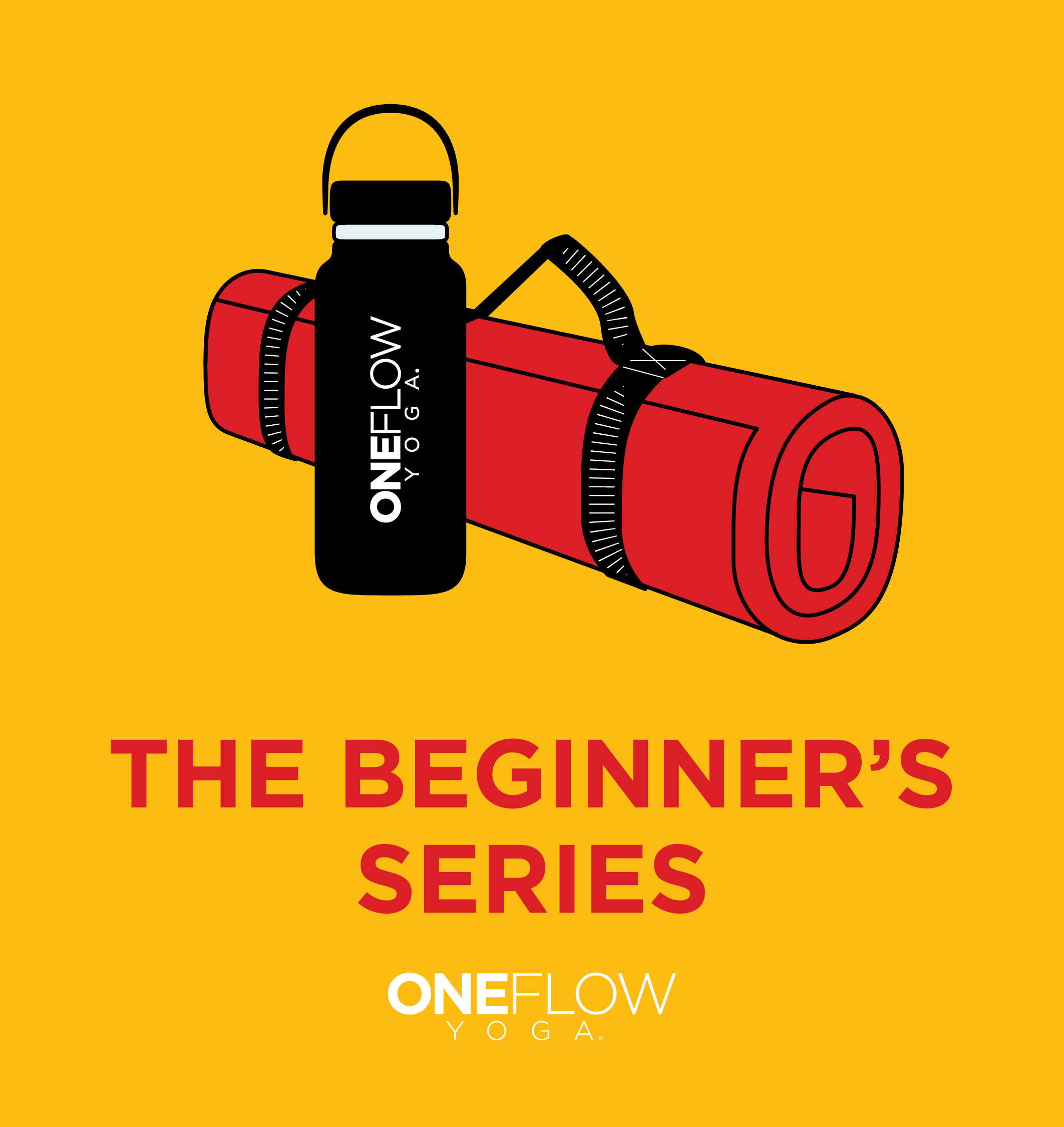As a yoga teacher, I realize when you first start out, all yoga looks the same. But each type of yoga has its strengths and liabilities. So let’s explore the question, what is the difference between vinyasa yoga and Bikram yoga?
The key differences between vinyasa and Bikram yoga include time, temperature, environment, and sequence type. Bikram yoga is 90 minutes, done in a hot room (105°F/40°C), and features the same 26 postures. Vinyasa yoga has a variable sequence and a characteristic “flow.” All other factors change.
There are other distinctions that might make one practice method work better for you. And note my aim is to look at the effectiveness of the Bikram yoga practice instead of the man. I leave the latter to the work of others.
Differences Between Vinyasa Yoga and Bikram Yoga
When I first started practicing yoga, there weren’t many yoga options, so I frequently did Bikram yoga. Today as a vinyasa yoga teacher, I’m better able to look at each practice to see how they compare.
I consider Bikram a gateway practice. Personally, I think anything that gets more people to practice yoga is a positive thing. However, there are some caveats you should consider, specifically in practicing Bikram and hot yoga.
Is Bikram Yoga Hot Yoga?
Bikram yoga refers to the yoga practice created by Bikram Choudhury. It is 26 postures, repeated twice for 60 and 30 seconds respectively, in 105°F/40°C heat, for 90 minutes. Hot yoga can be any yoga practice done in heat, but references to 26/2 or “original” yoga mean it’s a Bikram practice.
Many Bikram yoga studios decided to rename themselves in recent years, which is why you see multiple names for the same practice. They also distanced themselves from Bikram, the person, which allowed them to offer various types of yoga classes.
In contrast to Bikram, vinyasa yoga, also called “flow yoga,” is a breath-centered practice that changes each time you do it. Vinyasa yoga, by definition, varies, so you see differences in the length of classes, postures done, and studio environment. Also, unlike Bikram yoga, which follows a script, vinyasa is more dependent on the quality of the yoga teacher.
Time
Bikram and original hot yoga classes are 90 minutes in length. Vinyasa yoga, along with other practices, used to be around 90 minutes, but today 60-75 minutes is commonplace with a trend toward shorter classes.
In recent years I’ve seen more experiments with shorter hot yoga classes because people are busy. But purists insist on the 90-minute standard.
Does the time affect the quality of the class? If you are doing hot yoga, shorter classes may be healthier for you. I explore the reason why under “Bikram Hot Yoga Temperature vs. Temperate Vinyasa” below.
Intensity
Bikram yoga is famously called a “torture chamber.” As you might imagine, it draws many Type A people who love the extreme nature of it.
However, the heated environment provides most of the intensity. It would seem more like a stretchy class if you took the same practice to an 80°F/27°C room.
Vinyasa runs the gamut of being a very accessible, mild class to one that is extremely difficult. It relies more on the sequencing of postures, i.e., the order they are put together, to build internal heat and strengthen your body.
Overall Comparison
Side-by-side, a skilled vinyasa practitioner will be stronger than one who practices Bikram or hot yoga. Vinyasa yogins will also be more aerobically fit. However, if your goal is to increase your tolerance to heat and work with thermoregulation, Bikram might be your choice. Then, of course, you can get the same effect by going to a sauna.
I use the word skilled in the paragraph above because getting the benefits of vinyasa yoga depends on having a great yoga teacher and being open to learning. The same is not true for Bikram because it uses a script.
Let’s explore why vinyasa yoga produces a stronger body, starting with sequences.

Vinyasa Yoga Variable Sequence vs. Bikram Fixed Sequence
A sequence in yoga is when two or more postures are put together. If you move from one pose to the next, you will do a transition. However, in some yoga practices, like Bikram and hot yoga, you “break” the pose, which is stopping it. There’s a pause in between before starting the next.
Vinyasa yoga features a variable sequence type that changes, while Bikram has a set sequence that never changes. So you can literally go to a Bikram studio in Japan, Ireland, or the U.S., and the sequence will be identical.
Vinyasa Yoga and Variable Sequences
Vinyasa yoga is known as “flow yoga” because you move from one posture to the next using your breath. The postures are all interconnected.
There’s a tendency among new practitioners to focus more on getting to the next posture. However, an advanced practitioner realizes the value of transitions or how you get in and out of poses.
Variable sequences matter for a few reasons:
- They build strength
- They introduce novelty
- They can modify and intensify the work
Vinyasa Yoga Builds Strength
You can read about how yoga builds strength here.
However, let me highlight the principle of progressive overload, which is how you build strength.
Very quickly, your body adapts to loads that are placed upon it. In yoga, the posture choice provides a load, or stressor, for your body to work with. Over time you get stronger, and the load is no longer challenging. At that point, you have to adjust the load to continue getting stronger.
This is why the sequencing of yoga postures matters. If a load is too much, you can adjust it by modifying the posture. An example of this is a lunge posture, where you lower the knee to the ground to reduce the weight your body has to contend with.
Once you get stronger, you can adjust the posture by lifting the back knee. Likewise, you can string together other lunge variations after your body has adapted to the first high lunge.
Vinyasa Yoga Introduces Novelty
Novelty, or newness, also helps you build strength because your body has to figure out how to work with a new load.
Regularly introducing newness also keeps you interested in the practice. If the practice is the same all the time, it can be easy to tune out, which is the opposite of yoga. Yoga is about paying attention.
Vinyasa Yoga Perfect for New and Experienced Practitioners Alike
Because you can adjust the posture selection, that is, the postures chosen for a class and the order of the postures, you can affect the difficulty.
For instance, if I am teaching a class for beginners, I will focus on making the postures accessible. I’ll also repeat specific postures more to help students develop strength and learn the practice.
Or, if I am teaching a more technically challenging class, I’ll change the postures, order, duration, and how we get in and out of them to make it more difficult. The effect of working like this is it prepares your body to move in a wide variety of ways with strength.
I’ve actually had a student participate in a “tough mudder” endurance race, with her only preparation being vinyasa yoga. She had a regular practice, and over time, her body was ready for whatever the course could throw at her.
The Problem with Variable Sequences
There is a problem with variable sequencing–it takes longer to learn to teach this way. You have to understand functional anatomy, biomechanics, and Newtonian physics.
This is not a good business model if you are a yoga studio trying to pump out a lot of teachers. To combat this, many teacher training programs use set sequences.
When I teach teacher trainees, I too give them a sequence to begin with. However, then I teach how the sequence is put together. This happens in many professions when you are just starting out.
Our trainees study how to pull a sequence apart. They understand how to adapt and change it. And they learn how to create great sequences from scratch.
Bikram Yoga and the Fixed Sequence
There are a couple of benefits of having a fixed or set sequence.
- It is easier to learn as a student and teacher
- It provides comfort
- It offers a reliable experience
Bikram Yoga Easy to Learn?
To be clear, only the order of the postures and what the posture looks like is easier in Bikram. The sequence itself is not ideal for beginners, especially if you are not flexible to begin with.
I also see this in some vinyasa classes where newer teachers teach sun salutations but don’t modify them for accessibility. But the variable nature of vinyasa makes it better for beginners in general.
There is no adjusting a set sequence, so it’s more a “sink-or-swim” undertaking.
Bikram Yoga Provides Comfort
The set sequence in Bikram provides comfort because you know it’s always going to be the same.
But, the nature of yoga is to have a little bit of discomfort, like a rock in your shoe. This keeps you paying attention and doing the work of yoga. If you know what posture is always going to come next, you can start doing the practice by rote which is not yoga.
Bikram Yoga Offers a Reliable Experience
In my opinion, this is why Bikram became so popular; it is reliable. It’s the same reason why McDonald’s is famous because anywhere you go, the burger is the same.
But that sameness can be limiting. No one is confusing a meal at the golden arches with your favorite local eatery. The latter probably uses better ingredients and puts more time, skill, and even love into it.
And after your body adjusts to the postures of Bikram, it’s just maintenance. You’re not getting stronger. The same happens in any set sequence type of yoga.
Bikram Yoga the Script
Bikram provides consistency by scripting the sequence, and everything else said in a class. Again, if you want to teach a large group of would-be yoga teachers in a hurry, you give them a script or “dialogue,” as it’s known in Bikram.
The Bikram script has a few problems and uses what I call “push language.” For example, it instructs you to “lockout” your knees and other joints and to “go beyond your flexibility. And it commands you to “push your head back” instead of engaging and lifting.
A standing backbend, as an example, is about strength in the entire posterior chain of your body, not simply dropping your head back, “look back, fall back, way back.”
You can preview the script here.

Bikram Hot Yoga Temperature vs. Temperate Vinyasa
Bikram yoga is done at 105°F/40°C while vinyasa yoga varies. At our studio, we keep the room between 80°F-85°F (26°C-29°C) to provide a warm, comfortable environment. Our idea is to provide a relaxing and welcoming space.
That thinking is backed up by Timothy McCall, M.D. “Partly because heat facilitates muscle relaxation as well as calming the mind and nervous system, yoga is generally done in a warm room.” Yoga as Medicine
Heat in Yoga Has Some Challenges
Dr. McCall goes on to specifically call out Bikram and hot yoga.
“While the heat and humidity may facilitate going deeper into poses, they also increase the risk of dehydration and heart attacks.”
He further advises that if you are over fifty or not a regular exerciser, you may want to get a stress test before doing Bikram or hot yoga.
Internal Vs. External Heat
Why might you want to get your heart checked before doing a hot yoga practice? It has to do with heart attacks. Heat stresses your body, including your heart, and can put you at risk of heart failure.
The heat in hot yoga is external, meaning outside of your body.
A more thoughtful way to work is to generate heat internally, which refers to physically increasing the temperature of your muscles and body.
Vinyasa yoga builds this internal heat and gets your blood moving in preparation for the work ahead.
“Warm muscles and dilated blood vessels pull oxygen from the bloodstream more efficiently and use stored muscle fuel more effectively.” New York Times
Why is vinyasa more effective at warming you up? It is because of the dynamic movements and the “cardio” component the practice introduces through sequences like sun salutations. By contrast, there isn’t much in hot yoga to get you warm beside the heat as the movements are more static.
Avoid Core Body Temperature of 104°F/40°C
Core body temperature is a measure of how hot you are inside.
According to a study by the American Council on Exercise (ACE) study on Bikram yoga, core body temperatures rose to a high of 103.2°F/39.5°C for men and 102°F/f38.9°C for women. That’s hot and potentially problematic because heatstroke can occur at a core temperature of 104°F.
The study’s lead author had three recommendations to make Bikram safer:
- Shorten the class
- Lower the temperature
- Focus on hydration
Anecdotally I’ve seen people faint a few times in Bikram. That’s a predictable result from both the heat and the way the practice is taught. Dehydration is a genuine concern as many Bikram teachers actively discourage you from drinking water until after “eagle pose,” the fifth posture.
Couple that with the insistence that you “stay in the room,” and you have a preventable crisis coming.
If you choose to practice Bikram or hot yoga, please drink water often and whenever you need to. And if you feel nauseous or dizzy, sit down and take a water break.
Is Sweating Good for You?
In the U.S., there is a strange obsession with sweat. We feel if something is making us sweat, it should be doing something healthy for our bodies, right?
Didn’t I hear something about flushing toxins? You can jump to the benefits below, where this myth is challenged.
Sweat is like the mint toothpaste companies add to their product to make your mouth tingle. The sensation makes you feel like your mouth is cool and clean, but it’s in your head.
So does sweating mean you’re getting a better workout?
No. “Sweating, per se, provides no health benefits, apart from preventing overheating” Dr. Oliver Jay Director Thermal Ergonomics Laboratory.
“The benefits derive from the exercise itself, and the more intense, generally, the greater the health benefits.” Gretchen Reynolds, New York Times
Some people feel they are getting a better workout, even though they are not. And if that psychological hit keeps you moving, then, by all means, go for it. Just know you don’t have to be soaking wet to get fit.
But heating up can work against the goal of doing hard work.
Heat is an analgesic. It prevents you from feeling what is going on, and thus you stretch further than you might otherwise.
Take it too far, and that can result in muscle and joint damage. It’s something to be aware of, not something to fear.
Yoga makes you more sensitive to sensations which an overly hot environment works against.

Clothing
The heat will necessitate different clothing choices for each practice. When I practice hot yoga, I wear the shortest shorts I can find and a sports bra. Guys tend to wear shorts and no shirt.
In vinyasa yoga classes, I wear yoga pants, a sports bra, and a tank top. If the class is cooler, I’ll dress in layers and wear a long-sleeved shirt I can remove as I warm up. Again guys tend to wear shorts, but they might also wear a moisture-wicking shirt.
Bikram Yoga Mirrors and Other Environmental Differences
There are a few tell-tale signs you’ve wandered into a Bikram studio versus one specializing in vinyasa.
Carpet
If I were to ask you what the best surface to do a sweaty workout on, would “carpet” be in your top ten?
Yet, that’s precisely what Bikram studios use. They do it primarily for “safety and grip.” And, while I agree that slips and falls are something you want to avoid in the yoga room, there are better alternatives.
The birth of Bikram yoga came before the advent of modern mat technology and floor surfaces. Today a premium mat, grippy towel, and hard surface are the standard in keeping you safe. Not only do they work better than carpet, but they also avoid one other big negative:
SMELL.
No matter how often you clean the carpet, the smell is going to be a challenge. This is not a problem for modern vinyasa studios, which typically have surfaces designed to be easy to clean and free from odor.

MIRRORS
“Insider Tip: Set up your mat in a spot with a clear view of a mirror. Being able to check on your alignment is really helpful when you’re first beginning a regular yoga practice.” Corepower Yoga
Corepower Yoga, like other power yoga studios, will often use mirrors. Vinyasa yoga studios have been known to use them as well.
And mirrors are standard in Bikram and hot yoga studios.
Check Form or Alignment
Mirrors have one purpose, so that you can check how your “form,” a.k.a. “alignment,” looks. The topic of alignment is controversial and is slowly being challenged in the current conversation, but you can sum it up this way:
Alignment is how the posture looks. It’s an aesthetic quality.
Some teachers, and even entire types of yoga, like Iyengar, are alignment-based. Their focus is on getting students into the perfect form of the yoga pose.
The thinking behind this is admirable enough, to keep students safe. However, there is a challenge with alignment because no two people are ever going to look alike.
We all have differences in genetics and anatomy. Even identical twins have different life experiences, which will affect how a posture “looks.”
Unfortunately, having the “proper form” and “doing the postures right” are priorities that have filtered down to the masses. If perfectionism is something you are working with, avoid Bikram and all other alignment-based practices.
What Does it Feel Like?
In my early years of practicing yoga, I spent a lot of time in studios with mirrors. I didn’t realize how dependent I’d become on the mirrors until I practiced in a studio without them. I felt lost at first, but slowly another feeling started to emerge–empowerment.
We purposely don’t have mirrors at our studio because, for us, the practice is more what it feels like rather than what it looks like.
Mirrors As a Distraction
Mirrors distract us. If we’re walking in a building and come across a mirror, we’ll often do a double-take and check out how we look. Which is great.
However, yoga is a practice to help you pay attention to what is going on within you. But mirrors keep bringing you back to the surface level, which we call “taking you out of your practice.”
Music vs. Silence in the Yoga Room
One final environmental characteristic is sound. In Bikram and hot yoga, there is meant to be silence. So when the practice is going on, the only sounds you’ll hear are breathing and the teacher.
Many vinyasa classes, however, play music. This is another one of those controversial subjects, but I come down on the side of music. When done well, music can help us reach parts of ourselves that are hard to connect to in other ways.

Benefits of Bikram Yoga vs. Vinyasa Yoga
Bikram Yoga makes a lot of claims, but science doesn’t always agree.
Benefits of Bikram Yoga
Two things you hear over and over about Bikram yoga is:
- Flushing Toxins
- Oxygenating Blood
Flushing Toxins
First, you are fantastic at detoxification. Your lymphatic and gastrointestinal systems, kidneys, and liver are exceptional at cleaning up and clearing what would ail you. Yes, skin and sweating play a role, but they are much less effective at filtration.
If you want to detox, pee more.
Modern fads of detoxification are from the same period as snake oil. They are based on a theory called “auto-intoxication,” which doesn’t exist.
Seriously, we used to think that our body could poison itself, and we had to “get the toxins out.” That changed as our understanding of physiology changed. Yay science!
Oxygenating Blood
Getting more oxygen in your blood is a quick fix: take slower, deeper breaths through your nose. But, of course, the effects go away quickly after you stop breathing this way.
How much oxygen you have is measured by a pulse oximeter and depends largely on how many red blood cells you have.
The Mayo Clinic states: “Normal pulse oximeter readings usually range from 95-100 percent.”
There can be many reasons for a low reading, and you’ll want to consult your doctor.
Other Benefits
Bikram will help you with thermoregulation. It also helps to work with extremes, which can improve your mental resilience.
The other claims about flexibility, balance, calmness, etc., are just as true for other types of yoga. You don’t have to torture yourself to get them.
Benefits of Vinyasa Yoga
Vinyasa’s benefits fall into categories of physical, mental, emotional, and even spiritual.
Rather than explore them all, you can read about them here.
Just to highlight a few benefits, vinyasa yoga will help you:
- Become stronger and more flexible
- Build resilience, grit, and mental toughness
- Reduce stress and anxiety
- Build focus and pay attention
- Change your habits
How you practice vinyasa yoga, however, will determine what you get out of it.



